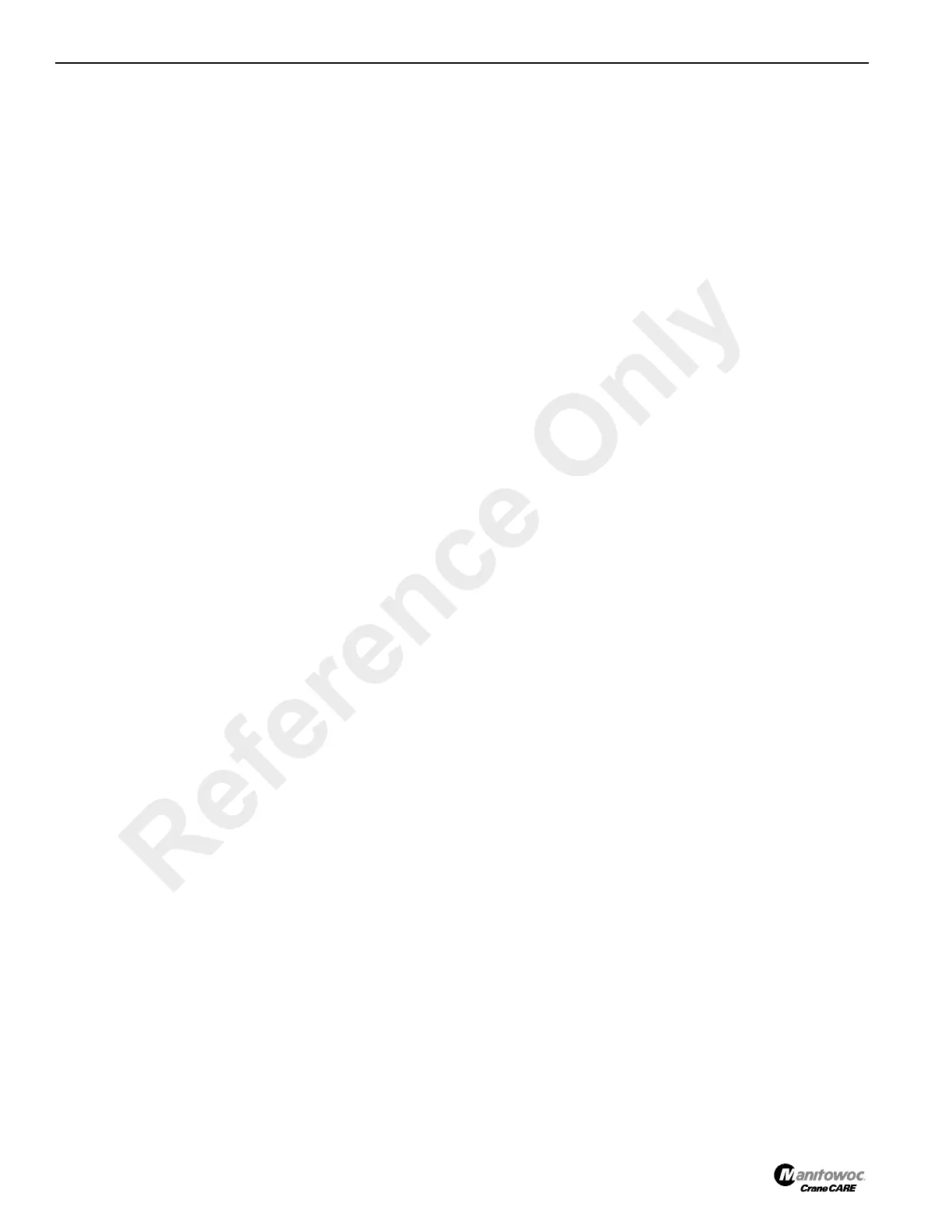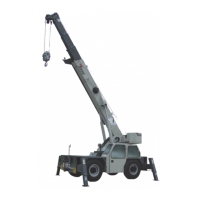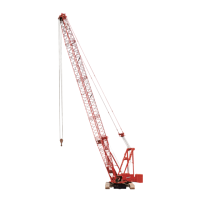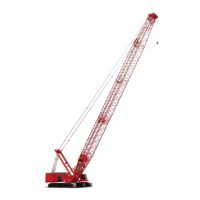AXLES/DRIVE SHAFTS/WHEELS AND TIRES CD5515-2/YB5515-2 SERVICE MANUAL
8-26 Published 1-20-2017, Control# 483-02
Assembly
NOTE: The crownwheel 20 Figure 8-49 and pinion 24 are
matched and should be replaced as a pair if either
one is damaged or excessively worn. The
differential case halves 12 and 13 are also
matched as are gears 14 and 16. Do not use
unmatched halves or gears.
Make sure all bearings are lightly oiled before
installing and setting. Make sure bearings are
rotated while being set.
1. Install pinion bearing outer race 28 Figure 8-49 to drive
head carrier 2 together with required thickness of shims
29 to give correct pinion depth. (See Pinion Depth
Setting Procedure on page 8-14). Install the shims
behind the outer race Figure 8-49.
2. Install new taper roller bearing cone 31 and a new
collapsible spacer 30 onto pinion 24.
3. Install outer race 27 to drive head carrier 2.
4. Insert pinion 24 into its bore. (Before inserting verify that
the pinion matches the crownwheel. The code numbers
etched on the pinion end face and the crownwheel
perimeter must be the same).
5. Install new taper roller bearing cone 26. Pack the cavity
between the lips of new oil seal 25 with grease and
install the seal to the drive head carrier 2.
6. Install the drive coupling yoke 23 and secure it with a
new combined stake nut 21 and washer 22.
a. Hold the yoke with a drive coupling spanner.
b. Tighten the stake nut until end float is almost zero
then check the seal drag torque which should be
between 0,40 to 0,75 Nm (3.5 to 6.6 lb-ft).
c. Continue to tighten the stake nut to collapsible
spacer 30 and give a rolling torque of 1,7 to 2,8 Nm
(1.3 to 2.1 lb-ft) excluding seal drag, crownwheel not
installed.
IF THE STAKE NUT IS OVERTIGHTENED, THE
COLLAPSIBLE SPACER MUST BE REPLACED.
Make sure that yoke 23 is rotated in both directions
to fully seat the bearings before measuring rolling
torque.
d. When the torque is correct, stake the nut to the
pinion shaft, using a square ended staking tool.
7. Install crownwheel 20 to case halve 13, tighten the
Verbus Ripp bolts 19 to a torque of 166 Nm (122 lb-ft).
8. Assemble the four planet gears 16 and thrust washers
17 onto the trunnion pins. Inst
all the planet gear
assembly and two
differential side gears 14 and thrust
washers 15 into case half 13.
9. Position top case half 12 onto bottom half assembly 13
aligning the match mark letters (see Note on page 8-7).
Apply Loctite® 243 to the threads of bolts 11, then install
them and tighten to a torque of 56 Nm (32 lb-ft). Check
the gears for free rotation.
10. Press taper roller bearing cone 18 onto the spigot of
case half 12.
11. Install the differential assembly 10 into the drive head
carrier 2.
12. Press taper roller bearing cone 9 onto the spigot of case
half 13.
13. Install bearing outer races 7 and 8, castellated nuts 5
and 6 to drive head carrier 2.
14. Adjust castellated nuts 5 and 6 to give bearing pre-load
(see Note) of 1.36 to 2.5 Nm (1.0 to 1.84 lb-ft).
NOTE: Measure the pre-load by taking another rolling
torque reading and subtract the torque figure
measured at step 6C. The difference is the bearing
pre-load.
15. Measure the crown wheel backlash, which should be
0.13 to 0.20 mm (0.005 to 0.008 in). Adjust castellated
nuts 5 and 6 by equal amounts when altering backlash.
When backlash and pre-load are both correct, install
tension pins 3 and 4.
16. Verify that the crownwheel and pinion are set correctly:
use an engineers marker on three of the pinion teeth and
check markings on the crownwheel are as indicated on
page 8-15. Adjust if necessary.
17. Apply Loctite® 275 to the drive head carrier mating face
and then install the axle casing (the carrier assembly
locates on two dowels). Make sure the assembly is
installed in the same match-mark position (see step 3,
Disassembly of page 8-11.
18. Apply Loctite® 243 to bolts 1 and install. Tighten the
bolts to a torque indicated in Chapter 1, Fasteners and
Torque Values.
19. Assemble both hubs and drive shafts and install the rear
drive shaft.
20. Fill the
axle with recommended
oil. See Preventative
Maintenance on page 5-1.
NOTE: Tightening torque depends on bolt type. The grade
is stamped on the bolt head. If standard grade 8
bolt, tighten to a torque of 72 lb-ft. (98 Nm).
If Verbus Ripp 12.9 grade bolt is used, tighten to a
torque of 122 lb-ft. (166 Nm).
Use heavy duty socket.
Reference Only

